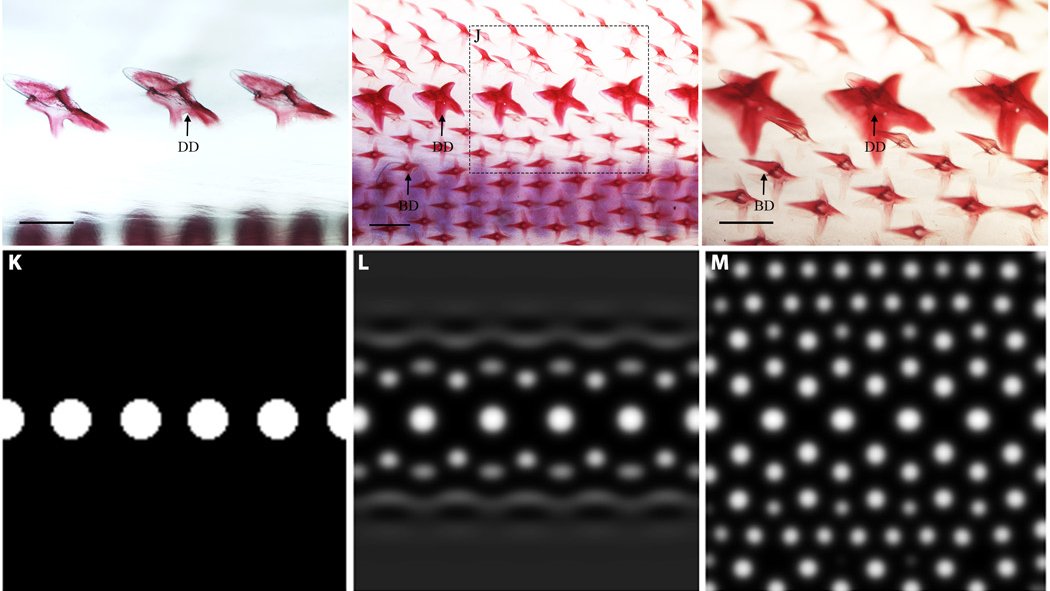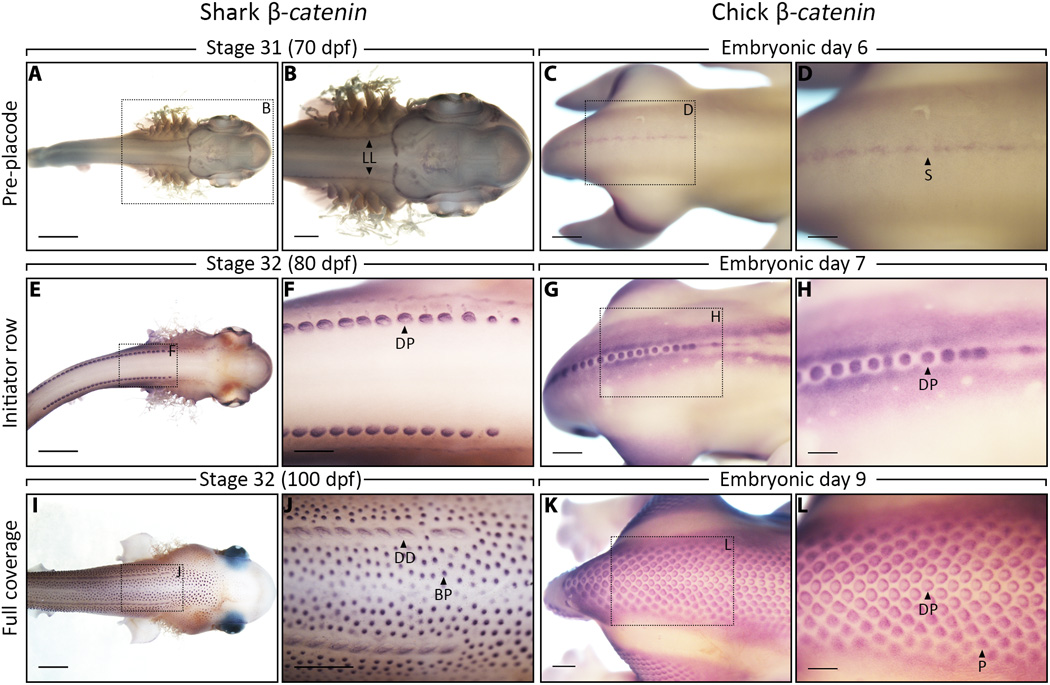I& #39;m going to do a Twitter Thing and see what happens.
I read a scientific paper or two most every day. Have for a while. All kinds of fields. Occasionally even understand them
So, I& #39;m going to chat about them! No rhyme or reason, just pulling stuff from my endless open tabs 1/
I read a scientific paper or two most every day. Have for a while. All kinds of fields. Occasionally even understand them
So, I& #39;m going to chat about them! No rhyme or reason, just pulling stuff from my endless open tabs 1/
First up- something like cellular automata. And sharks! Good modeling and good treatments! And pretty!
An ancient Turing-like patterning mechanism regulates skin denticle development in sharks https://advances.sciencemag.org/content/4/11/eaau5484">https://advances.sciencemag.org/content/4...
An ancient Turing-like patterning mechanism regulates skin denticle development in sharks https://advances.sciencemag.org/content/4/11/eaau5484">https://advances.sciencemag.org/content/4...
Alan Turing (he of the Turing machine model of computation, and of Enigma codebreaking fame) wrote a paper in 1952, proposing a & #39;chemical basis for morphogenesis& #39; to explain how a homogenous tissue could develop spatial patterning, like spots or stripes 2/
https://www.dna.caltech.edu/courses/cs191/paperscs191/turing.pdf">https://www.dna.caltech.edu/courses/c...
https://www.dna.caltech.edu/courses/cs191/paperscs191/turing.pdf">https://www.dna.caltech.edu/courses/c...
They& #39;re a kind of analog cellular automata or standing wave, building structures out of feedbacks. If you have two morphogens, P and S, and P causes cells to make both more P and S, and S inhibits the production of P, and they diffuse at different rates- patterns happen 3/
You can play with these reaction/diffusion systems yourself! https://pmneila.github.io/jsexp/grayscott/
Turing">https://pmneila.github.io/jsexp/gra... was concerned with patterns, but the shape of a whole creature is just a pattern, and diffusion reaction mechanisms with many more signals are (SIMPLIFYING) how animals get built 4/
Turing">https://pmneila.github.io/jsexp/gra... was concerned with patterns, but the shape of a whole creature is just a pattern, and diffusion reaction mechanisms with many more signals are (SIMPLIFYING) how animals get built 4/
I love that it& #39;s just a clever way to pack information into a genome- create signaling loops with varying degrees of sensitivity, and some macro-scale feature of a critter gets iterated out 5/
Turing mechanisms seem to be responsible for spacing out hair and feathers, and now, it seems, one of the more excellent animal coatings- denticles!
In their continuing radness, sharks are coated in tiny teeth. I actually used a shark-inspired coating to prevent biofouling 6/
In their continuing radness, sharks are coated in tiny teeth. I actually used a shark-inspired coating to prevent biofouling 6/
Denticles seem to be ancestral- that it, skin teeth predate mouth teeth. [imagines absent skin teeth returning]
So, how do they get placed? 7/
So, how do they get placed? 7/
A simulation suggests that a dorsal line of initiator spots, sending out activator and inhibitor signals that propagate at different rates (bottom) can be tuned to produce patterns similar to those on a catshark. But is that what& #39;s happening? 8/
Probably! By labeling shark embryos with tagged strands of RNA that are complimentary to the messenger RNA for fgf4 (fibroblast growth factor, the activator) and bmp4 (bone morphogenic protein, the inhibitor) genes, patterns of signalling emerge that mirror the sim 9/
It seems to be about the same mechanism as the one that governs feather placement in birds (right), and that homology means it& #39;s old as dirt. Older than most dirt by a lot, actually. 10/
There& #39;s even better evidence from breaking the mechanism- stick a pellet doped with growth factor inhibitor in a developing shark, and it disrupts the pattern on the embryo in the same fashion as in a sim. A control pellet doesn& #39;t cause the disruption- not a wound response 10/
Neat, right? It checks lots of boxes for me- a mechanism that builds big, complicated structures from tangling little bits, theory made manifest as simulation, then as observation, and then as perturbation. Sharks! Code breaking! Code breaking sharks! (Soon) 11/
Naturally, I have more questions. What are yours?
Spread it around if it was any fun, and I& #39;ll grab something else to talk about tomorrow! 12/12
Spread it around if it was any fun, and I& #39;ll grab something else to talk about tomorrow! 12/12

 Read on Twitter
Read on Twitter![Denticles seem to be ancestral- that it, skin teeth predate mouth teeth. [imagines absent skin teeth returning] So, how do they get placed? 7/ Denticles seem to be ancestral- that it, skin teeth predate mouth teeth. [imagines absent skin teeth returning] So, how do they get placed? 7/](https://pbs.twimg.com/media/Eidnaa-UwAEjHJq.jpg)





